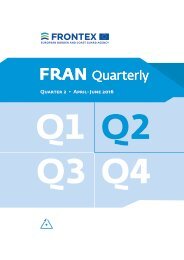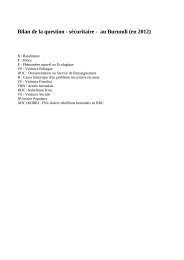Create successful ePaper yourself
Turn your PDF publications into a flip-book with our unique Google optimized e-Paper software.
IDEOLOGY<br />
reality. This is the near opposite of the strategy followed by al-Qaeda in its<br />
failed uprising in Saudi Arabia between 2003 and 2006, which focused on<br />
Western targets.<br />
The Islamic State’s campaign has adhered to Baghdadi’s strategy, with<br />
the Shiites and Saudi security forces suffering the brunt of its attacks. Since<br />
November 2014, five major attacks have been carried out on Shiite mosques<br />
in the Eastern Province, in the form of either suicide bombings or shootings,<br />
and one suicide bombing has taken place against an Ismaili Shiite mosque in<br />
the southern region of Najran.<br />
As for the government, one very deadly suicide bombing was carried out<br />
against a security forces mosque in the Asir region, in August 2015, as well<br />
as numerous drive-by shootings against police stations and security patrols<br />
and several targeted assassinations of security forces personnel. Many of the<br />
targeted assassinations have been carried out by family members of the victims—usually<br />
cousins killing cousins. One such murder took place in September<br />
2015 outside the northern city of Ha’il, where two militants filmed<br />
themselves killing their cousin. Abu Muhammad al-Adnani, the official<br />
spokesperson of the Islamic State, celebrated this murder in a public statement<br />
delivered the following month, describing the act as “more dear to us<br />
than tens of car bombings.” 1<br />
Thus far, Baghdadi’s strategy has yielded mixed results. The attacks have<br />
been persistent but limited in effect. As of June 2016, the overall pace of<br />
attacks has not slowed. In April 2016, the Islamic State released its first official<br />
video from Saudi Arabia, in the name of the province of Nejd, which depicted<br />
the targeted assassination of a military official in al-Dawadimi, near Riyadh.<br />
In May 2016, the semiofficial Saudi press reported that over the past year the<br />
kingdom had suffered an average of one Islamic State attack every twelve days.<br />
Meanwhile, a security crackdown has undermined the Islamic State’s capabilities<br />
in the country and put its networks in Saudi Arabia on the defensive.<br />
Despite the frequency of attacks, the press has also reported promising news:<br />
many of the Islamic State’s networks in the country have been disrupted, and<br />
many attacks have been thwarted. Back in May, for example, police raided<br />
two Islamic State safe houses near Taif, and the leader of the al-Dawadimi<br />
attack was arrested. The Saudis hailed the arrest as particularly significant, as<br />
the captive is considered to have been the main go-between with the Islamic<br />
State leadership in Syria and Iraq. But just how significant this arrest truly is<br />
has yet to be seen. For the time being, the Islamic State threat to the Saudi<br />
regime remains persistent, but it is by no means existential.<br />
37






